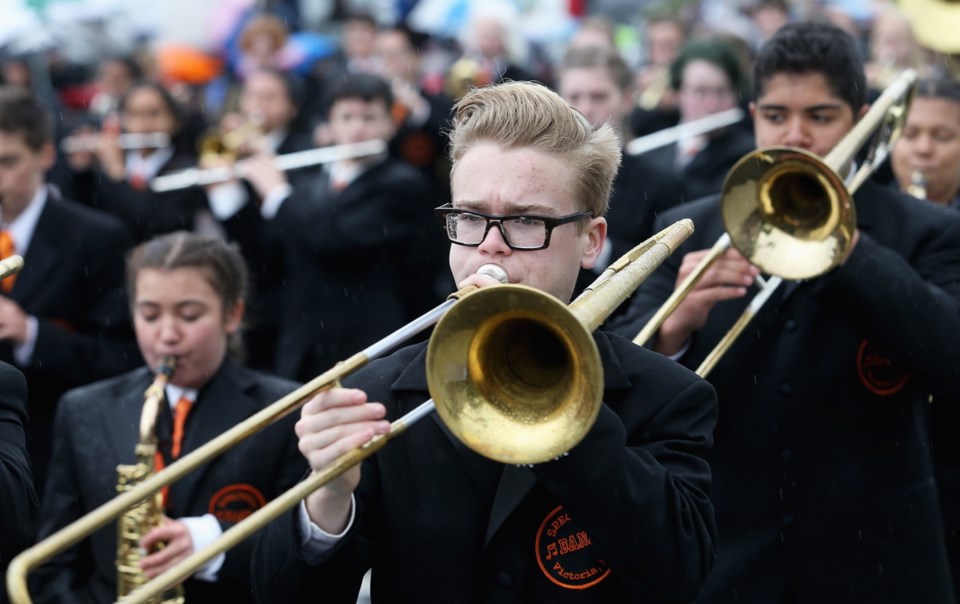In most African cultures, music is for dancing, not for listening to quietly while seated in a chair. Sociologists call this evidence of a participatory culture, where individuals don’t just act as consumers, but also as contributors or producers.
In many European cultures as well, music is for sharing. Walking down a street in France, I had stopped to admire a duet — a guitar player and an accordionist. “Do you play?” I am asked in faltering English. “Sure,” I reply, “but … ” and the guitar is handed over. “Alors, rejoinez nous” — please join us, and now I’m playing three- or four-chord songs I’ve never heard before, but which have patterns which make sense to a musician’s ear, with new friends I’ve never met before.
Late at night in a street in a small beachside village in Mexico, a group of men, possibly assisted by a touch of “contrabando,” the local illegal tequila, are singing ranchera songs — in two or three harmony parts.
I watch the guitar player — he’s not doing anything complicated — he’s not Chet Atkins or Paco de Lucia or Joe Bonamassa, but then neither am I. He’s just making simple unadorned music — real music.
Again, “ti juegas?” “Un poco,” I shrug and the guitar is handed over. Again, I don’t know the songs, just that they have harmonic patterns that are, in western cultures at least, universal; one-four-five chord progressions, musicians call them.
Would this happen on a street in Victoria? Maybe, but somehow we’ve been acculturated to treat music as something we enjoy as listeners, not as participants.
There are exceptions, of course — the boîtes à chansons of Montreal and Quebec, or the music and song that have always been an important part of Acadian culture are participatory.
But in our western provinces’ schools, music has become something of an “attachment” to the core curriculum — something not for everybody.
But that might be changing. New research is shedding light on how the brain interacts with music.
“Music is very subjective,” says Dr. Daniel Levitin, a professor of neuroscience and music at McGill University in Montreal and author of the bestselling book This is Your Brain on Music, adding that there are more researchers studying the neurological effects of music now than ever before.
A study published in Scientific Reports recently by researchers at University College London looked at how quickly the brain can recall a “familiar” song — much like the “name that tune” games radio hosts play on-air.
When country star Glen Campbell was diagnosed with the onset of dementia, he continued to perform stadium shows even though he could not remember the names of his children who were his band. One of the children had to do that.
Sound complicated? Welcome to the world of studying music and the brain.
Which brings us to the question of music and young, developing minds.
Playing music, researchers tell us, is one of the few activities that involve using the whole brain. Playing music, especially, is like a full body workout for the brain and has surprising benefits not only for learning language, improving memory and focusing attention. This according to Dr. Anita Collins in her TED Talk, How Playing an Instrument Benefits Your Brain.
Collins focused her work on language development and executive function. This latter is a set of mental skills that help you get things done, and is understood to be significant to early educational success.
Many other studies over the years have shown that playing music engages the brain in a unique way that virtually no other activity does.
In the past few decades, neuroscientists have made advances in understanding how our brains work with instruments such as MRI and PET scanners.
Apparently, playing music requires the use of nearly every area of the brain at the same time, and each of these areas is doing its part of the work instantaneously.
Tasks such as reading or doing math problems seemingly each have corresponding areas of the brain where activity can be observed. But when researchers have participants listen to music, they see “fireworks” on the screen.
Playing music, any style of music, from Bach’s endless modulations to jazz innovator John Coltrane’s almost algebraic substitutions for standard tunes to elementary and secondary school band arrangements, move the musician’s brain into areas of thought nothing else can.
“As a little girl,” Albert Einstein’s second wife Elsa once remarked, “I fell in love with Albert because he played Mozart so beautifully on the violin. He also plays the piano. Music helps him when he is thinking about his theories. He goes to his study, comes back, strikes a few chords on the piano, jots something down, returns to his study.”
It might be time for music education to move back into the curricular mainstream.
Geoff Johnson is a former superintendent of schools.



